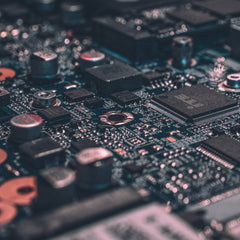The invasion of connectivity has influenced large cities around the globe to embrace the Internet of Things (IoT) as the all-purpose solution for improving the quality of life. As the population of people living in cities continues to grow, the multitude of wasted resources will increase from an already large amount. In order to support the changing infrastructure of city life, smart technology needs to be further implemented in the form of devices and vehicles in order to reduce the consumption of valuable resources such as energy, gas, and water.
Smart technology has barely reached its threshold of possibilities at this point in time. There has only been a handful of European and American cities that have begun to implement new technology. That being said, the success of combining IoT technology with the physical city infrastructure in the few existing smart cities has provided cities stuck in the past with overwhelming evidence of how the lives of citizens can be vastly improved with smart technology. The issue is not in cities not being able to access the technology; there are several industry leading companies such as Cisco, Intel, Siemens, and many more, that are creating smart solutions with innovative technological advancements. It is a matter of cities being willing to take a leap of faith towards a future full of efficient and cost-effective solutions.
The municipalities that have already embraced the IoT have drastically enhanced the quality of city life while reducing spending and easing the pain of city congestion. There are a couple of great examples of how cities in the United States have implemented this technology. San Francisco has begun to integrate sensors into their streets and parking spots to help drivers avoid traffic and find open parking spaces quickly. San Antonio has smart LED streetlights, which can alter their brightness levels in instances of fog or rain to improve the road visibility for drivers. These are among the many innovations that are making cities easier to navigate and live in while improving existing safety standards.
As more cities begin to adopt the features of what has been deemed an IoT revolution, it will be important that there are standards in place. These standards will make the most innovative tech much more synonymous solutions in cities around the globe, which will assist in distinguishing solutions that work from solutions that don’t. Ken Briodagh, writer for the IoT Evolution, describes the need for standards:
“As each city seeks to address its most pressing needs, or move toward the implementation that has the most potential for success, the leaders need to start working together with each other to share knowledge and intelligence about these projects so the successful ones can be replicated and the failures won’t be” (Read the full article from IoT Evolution).
As IoT technology starts to become a more central part of city infrastructure, standards will begin to develop at a much more successful rate. Converting a city into a smart city will not happen overnight. It is unrealistic to expect the immediate integration of smart technology around the world, but what can be expected is cities seeking solutions in IoT for their specific and pressing needs. As time goes on there will be a global peak in the production of IoT devices; if cities continue to have success in improving the quality of life with smart technology, then the widespread adoption of the smart city is an inevitable, but necessary step in creating a more resource-efficient society.






